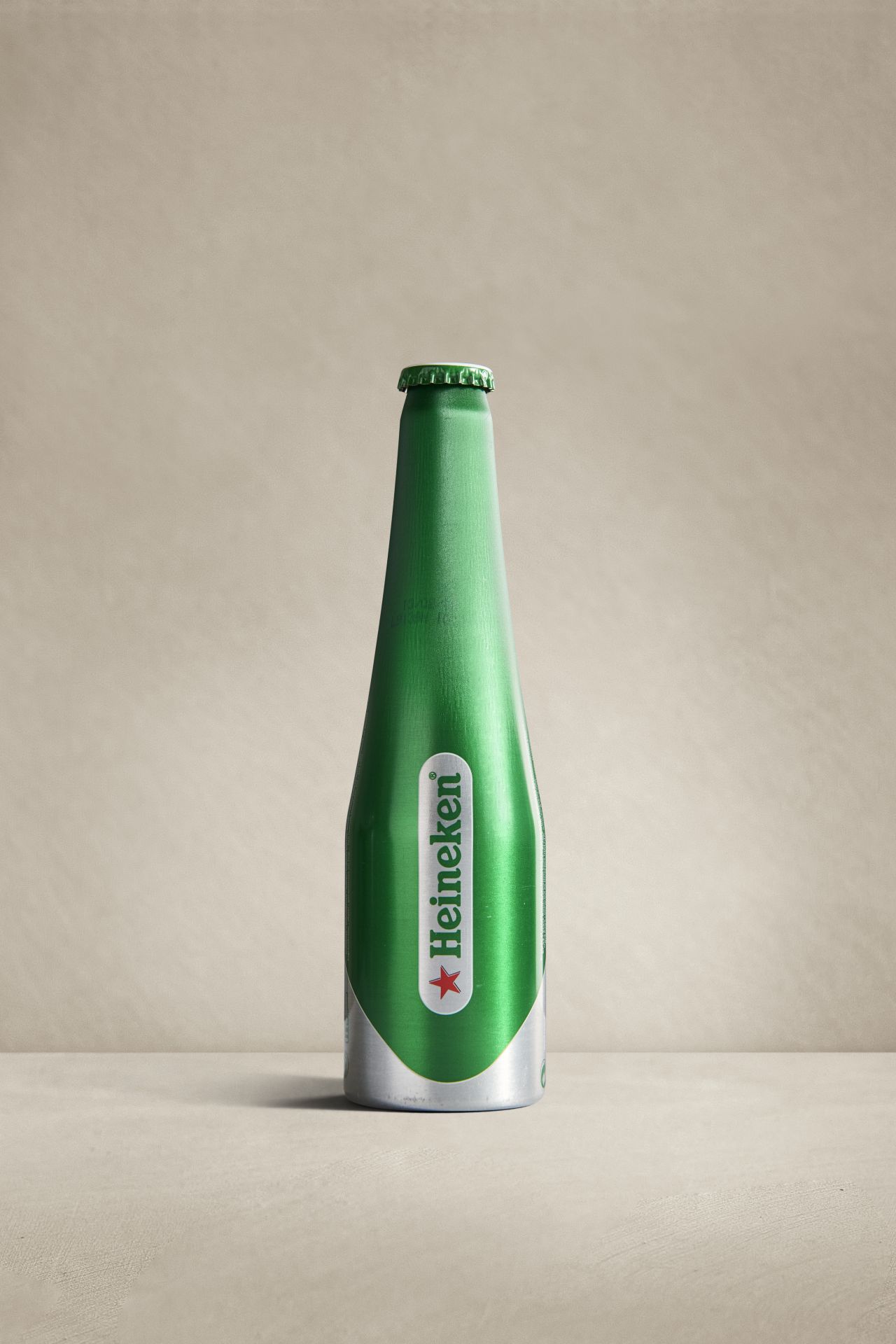INFO
33 cl-bier bottle, Heineken (Paco, type Icone)
Ito Morabito (Ora-ïto)
2009
aluminium, filled
21.5 x 5.8 cm

Dynamic brand design
Heineken introduced its first aluminium bottle – Paco – in 2002. It was created by the French designer Ito Morabito (1977, known by his brand name Ora-ïto), who won an Oscar des emballages, the ‘packaging Oscar’ for innovation. Brasseries Heineken in France developed the bottle especially for the Parisian nightlife crowd: made of lightweight aluminium instead of glass, it was ideal for dance floors in trendy nightclubs. For the sake of exclusivity, the bottle was distributed on a limited basis, also in the Netherlands.
In 2002, Heineken conducted a test with Paco at five beach bars in Bloemendaal (town in North Holland). This was an ideal location since glass bottles had recently been banned from the beaches there. The lightweight aluminium bottle proved to be an ideal alternative. The concept caught on with the progressive dance and lounge crowd at beach clubs such as Woodstock and Bloomingdale’s. A year later, the aluminium bottle was successfully introduced into the 150 hippest catering outlets in the Netherlands.
International success
The luxury beer bottle became synonymous with exciting nightlife beyond the Netherlands as well. For instance, the Paco garnered remarkable public and media response in Ora-ïto’s homeland, where the concept was first launched. The bottle’s iconic status was fully assured after it was acquired by the prestigious National Contemporary Art Fund (FNAC). It went on to be bought by museums and galleries following the launch in 35 countries, and with that Paco was recognized worldwide as a work of art.
Simplexity
In the summer of 2006 Heineken presented a new design by Ora-ïto, a variation on the Paco called the Icone. This more streamlined bottle was also intended for the most exclusive clubs and bars. The futuristic design is a common denominator of all the product designs coming out of Ora-ïto’s multidisciplinary studio. Virtually all the symbols of our time – from telephones to architecture, furniture to hotel interiors, perfume to trams, and restaurants to flying saucers – are subjected to his method of simplification by manipulation, which the designer himself has christened simplexity.
Contemporary desires
According to his own website, Ora-ïto ‘dissects the DNA of the present to conceptualize mutations of the future and give shape to the desires of our contemporary society.’ For example, the product designer came up with a whacky variation of the Nike sports shoe, by crossing it with the classic 1956 Eames Lounge 670 armchair, including its distinctive wood veneer. It is not surprising that countless strong brands, such as Cassina, Cappellini, Bouygues, Alstom, Laguiole, Zanotta and Accor, have partnered with him to give their products not only sculptural quality but above all a ‘mark of modernity.’
Visionaries
For Heineken, keeping abreast of the time, or rather getting ahead of it, is baked into the company’s DNA. Ever since its establishment in 1864, the brewer has sought to keep up with the latest developments by collaborating with specialists and visionaries in all fields, from science and technology to art and design. This will certainly not be the last time.